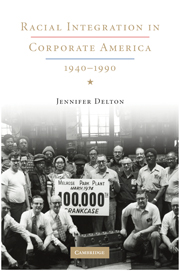Introduction
Published online by Cambridge University Press: 05 June 2012
Summary
Like other steel companies in the early twentieth century, the Lukens Steel Company in Coatesville, Pennsylvania, hired large numbers of immigrants and African Americans. Lukens executives regarded both groups as racially separate from themselves but dealt with each differently. Charles Lukens Huston, Sr., who was in charge of operations and production, preferred immigrant labor to black labor. Concerned about high turnover among his immigrant workers, he engaged a consultant to instruct Lukens foremen and supervisors on how to be more culturally sensitive when dealing with foreign-born workers. In an effort to stem his increasing dependence on black labor, he lobbied against anti-immigration laws.
In Huston's eyes, black workers were dangerous, disruptive, and inefficient. He was fearful of them and felt inconvenienced by the special attention he felt they required – that is, segregation and policing. The main problem with black workers was where to put them. Housing was not a problem for immigrants because they could live anywhere, but blacks required a segregated space, even in Pennsylvania, and space was scarce. During World War I, Lukens had hired several hundred black southerners. Like other steel companies in the area, Lukens housed them in an encampment on plant grounds, watched over by Lukens's own police force. Huston referred to it as their “colored colony.” Huston worried constantly that noise and activities in the black encampments would disturb the neighbors.
- Type
- Chapter
- Information
- Racial Integration in Corporate America, 1940–1990 , pp. 1 - 14Publisher: Cambridge University PressPrint publication year: 2009



